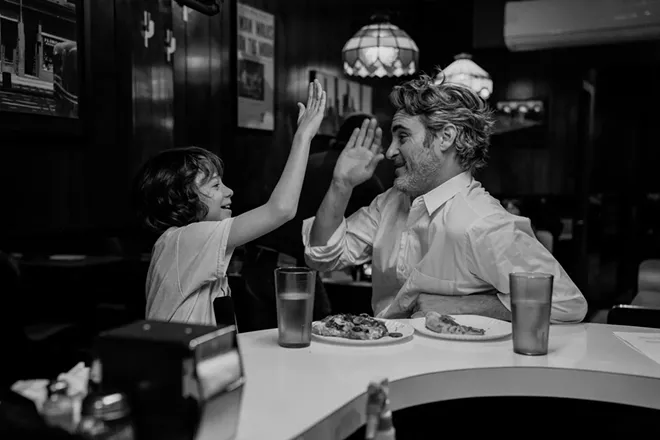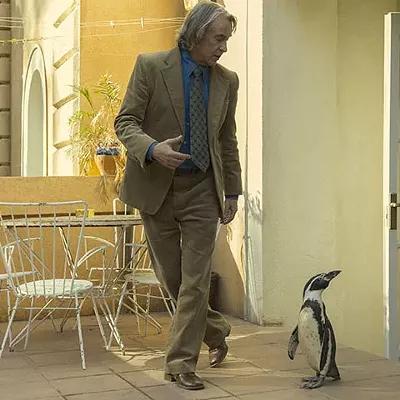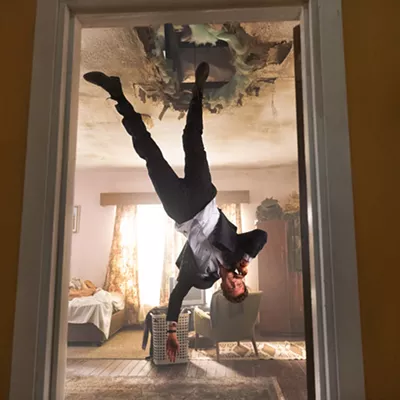The work of Oscar-nominated writer-director Mike Mills (20th Century Women, Beginners) has always been grounded in an inescapable sense of empathy — for the world, the people who live in it, and the characters he crafts a film around.
Not only is the meditative black-and-white film C'mon C'mon yet another precise example of Mills crafting that empathy — it is also his best work to date. It is a tender family story told with overflowing love, from the grace given to the performances to the sense of care given to capturing a sense of place.
The film stars a career-best Joaquin Phoenix as Johnny, a radio journalist who's disconnected from his sister Viv, played by an exceptional Gaby Hoffmann, and her son Jesse, portrayed by the wonderful newcomer Woody Norman. Viv's husband, Paul, seen through the compassionate performance of Scoot McNairy, is experiencing a mental health crisis after moving away from his family for a job. When Viv goes to ensure he gets the help he needs, it's left to Johnny to look after her son whom her brother hasn't seen for nearly a year.
The film that follows takes us from Detroit to Los Angeles, New York and New Orleans as Johnny, with an adorable Jesse in tow, goes around interviewing children about what they think of their future. It is a film that delicately captures the ebb and flow of life with a kind eye for all its subjects, rebuilding the sense of connection Johnny had lost with his family.
This may sound like a film you've seen before. After all, there are many stories about family reconnecting. The presentation on display ensures it absolutely isn't. The pacing and editing of C'mon C'mon maintains a peaceful, melodic cadence that makes everything feel alive. The interviews with real children are seamlessly interwoven into the story, imbuing it with an unending sense of authenticity. The observations and reflections the children share are astutely illuminating, reflecting the value of listening to young people about what they think when facing an uncertain future.
Not only is the work of radio journalism brought to life, but so too are the places the film takes us to. It is remarkable that a location like New York, which holds a ubiquitous presence in cinema, can feel fresh. Every angle and perspective feels like one you haven't seen before. As Johnny himself remarks about his work, it is that ability to transform the mundane into something immortal that makes the film so transcendent. It also is deeply funny, eliciting many a chuckle at the push and pull between the two travelers as they learn from each other's quirks along the way.
From the first moment when Jesse begins to experiment with the radio equipment, capturing recordings of his own, there is a spectacular use of sound that wraps you up in the vibrancy of the world. From the waves crashing on the beach to the roller skaters going by a pianist playing a song on the street, everything is just so perfectly attuned to the rhythm of the world around them. This includes the rich relationships between the characters as they begin to care for each other even as they are at difficult points in their lives.
Johnny is facing down loneliness, a feeling he acknowledges he masks with humor in one of many recorded monologues. Jesse is trying to cope with what he knows about the challenges facing Paul, a father we see he deeply loves in many near-silent scenes that speak volumes about their relationship. Viv and Johnny are working through the loss of their mother, something they both mourned in different ways and are able to finally discuss from a distance over the phone. Every performance absolutely shines, giving these complex emotions shape and form. Some of this feels like familiar ground for Mills. Like his outstanding 20th Century Women in 2016, this film is about family and relationships. Like that film, he weaves in characters reading specific texts that appear on screen. From children's books to an incisive essay by filmmaker Kirsten Johnson, they serve as reflections on the themes of the story.
Yet here, it all feels more fully realized. The family at the core is given more depth, and the texts speak more cohesively with the images on screen. It is Mills rising above the high bar he has set for himself. The result is a sublime work of art that, while a humble story about a family, serves as a vast reflection on life which becomes as immortal as the interviews embedded within it. ♦
























